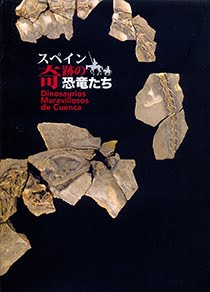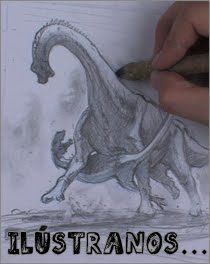En el 76th Annual Meeting de la Society of Vertebrate Paleontology hemos presentado de nuevo un póster de saurópodos. En estas jornadas que tuvieron lugar en Salt Lake City, hemos tenido la posibilidad de hablar un poco sobre la historia evolutiva de los saurópodos portugueses. En una comunicación titulada "Evolutionary history of Late Lusitanian Basin (Portugal) and presentation of a new basal macronarian form". Este trabajo resulta de la tesis doctoral de uno de los autores de este trabajo y ha contado con participación de instituciones como el Grupo de Biología Evolutiva UNED, Sociedade de História Natural y Fundación Conjunto Paleontológico de Teruel-Dinopolis. En esta comunicación se presenta una nueva propuesta filogenética que incorpora por primera vez a todos los taxones de Jurásico Superior de la Península Ibérica.
Sauropods are a well-represented group in the Upper Jurassic of Portugal, represented by four taxa: Zby atlanticus; Dinheirosaurus lourinhanensis; Lourinhasaurus alenquerensis and Lusotitan atalaiensis. However, the recent systematic review of older specimens as well as the discovery of several new ones (including partial skeletons) allows recognition of a higher diversity for this group and improves the understanding of the Iberian Late Jurassic sauropod faunas. The systematic study of the sauropod fossil record of the UpperJurassic of the Lusitanian Basin is performed here, based on a new phylogeneticanalysis. It includes, for the first time, all Late Jurassic-basal Cretaceous sauropod taxa from both Portugal (Lourinhasaurus, Dinheirosaurus, Zby and Lusotitan) and Spain (Turiasaurus, Aragosaurus, Losillasaurus and Galveosaurus) and two new specimens: SHN 181 and SHN (JJS) 177. SHN 181 (from Lourinhã, Portugal) represents a new basal macronarian taxon featured by an exclusive combination of characters. The proposed phylogenetic hypothesis is based on a dataset composed by 95 taxa and 464 morphological characters. The results of the phylogenetic analysis support that: i) Zby is a turiasaur more closely related to Turiasaurus than Losillasaurus; ii) Turiasauria is clade of non-neosauropod eusauropods more derived than Mamenchisauridae and composed by three Iberian taxa; iii) Dinheirosaurus is a diplodocine more derived than Supersaurus, Tornieria and Kaatedocus; iv) SHN (JJS) 177 is a diplodocine more closely related to Diplodocus than to Barosaurus, supporting the presence of more than one diplodocine in the Portuguese Late Jurassic; v) Lourinhasaurus is a camarasaurid, sister taxa of Camarasaurus; vi) Camarasauridae is a monophyletic clade; vii) Lusotitan is a brachiosaurid titanosauriform; viii) SHN 181, is a new basal macronarian more derived than Aragosaurus and more primitive than Europasaurus+ Titanosauriformes. The relationship of the Portuguese sauropods with taxa from the North American Upper Jurassic Morrison Formation is less close than that interpreted from other dinosaur groups. Diplodocines and camarasaurids of the Upper Jurassic record of Portugal are more closely related to those of the Morrison Fm. in the USA, than to the Gondwanan representatives. The closer relationship among Portuguese and North-American forms can be explained by the recent common history of these territories. On the other hand, Turiasauria is probably so far restricted to the European territory during the Late Jurassic.
-----
Más información:
- Referencia: Mocho, P., Royo-Torres, R., Ortega, F., 2016. Evolutionary history of Late Jurassic sauropods of the Lusitanian Basin (Portugal) and presentation of a new basal Macronarian form. 76th Annual Meeting of SVP. Abstract book. 190.
- Imágenes: Arriba, Pedro Mocho, Phill Mannion y Emanuel Tschopp. Abajo, Pedro Mocho y Elena Cuesta.





























No hay comentarios:
Publicar un comentario